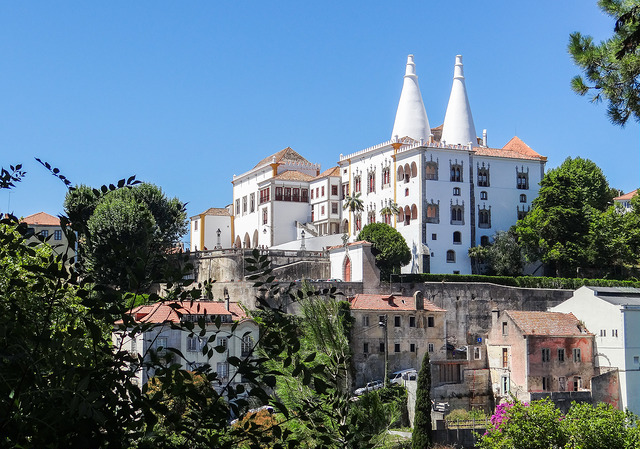In the right spots across the globe, retirees can combine a fulfilling, affordable lifestyle in stunning surrounds. A new report from the editors at Internationalliving.com/au points to three breathtaking places to enjoy a fairy-tale retirement, for less—in Europe, Central America and Southeast Asia.
Source: InternationalLiving.com/au

A big benefit of retirement is having the time to discover the many wonders the world has to offer. However, many people assume a retirement in an extraordinary, dream location is out of the question.
But it needn’t be—in all sorts of good-value locales around the world, retirees can enjoy a high quality of life for less and live surrounded by wonder and beauty.
International Living Australia’s report explores three stunning retirement havens—in Portugal, Mexico and Cambodia—that offer spectacular surroundings, a high quality of life and affordable costs.
Sintra, Portugal
A favourite summer retreat of the former royal family, Sintra is full of national treasures. Just a 40-minute train journey from Lisbon, Portugal’s capital, its palaces, mansions and architectural follies deliver an enchanted setting.
Moorish doorways, crenellated watchtowers, Scottish Baronial turrets, Manueline sea monsters—an inkling of what awaits lies only steps from Sintra’s railway station. Some visitors mistake the first turreted fantasy building for the National Palace, but it’s merely the town hall.
Sintra is packed with opportunities to explore—from the gothic-style national palace in the centre of town to the ramparts of the 8th-century Moorish castle. The Convento dos Capuchos is remarkable as a monastery built into a stony hillside, while Quinta da Regaleira features an elaborate, Harry Potter-esque palace—complete with gargoyles—a chapel and an expansive park boasting lakes, grottoes and fountains.
Perhaps the town’s standout attraction is the pastel-painted Palace of Pena, a 19th-century Romanticist marvel sitting high atop Sintra’s hill, surrounded by pine forests—the pink turrets, daffodil-yellow tower and monstrous gargoyles are striking.
A couple could live well in this arts-rich tourist town on a budget of $4,320 a month, though on less elsewhere in Portugal, according to International Living Australia.
San Miguel de Allende, Mexico
San Miguel is deeply rooted in the heartland of Mexico, a few hours’ drive from Mexico City. Its altitude is over 1,828 metres, so the days are comfortably warm and the nights blissfully cool.
The city was officially founded in 1541, getting rich when silver was discovered in the nearby states of Zacatecas and San Luis Potosi. Supplying the mines and catering to the workers and travellers passing through brought wealth to the city. Plus many of the newly-rich silver barons chose to live there.
Today, its historic centre is pretty much the same as it was 250 years ago and in 2008 San Miguel was declared a UNESCO World Heritage City. Its colonial centro is a massive draw and has a lot of benefits to offer retirees: among them a low cost of living, a focus on the arts, charming local cultural traditions and mild weather year-round.
Sitting at the rooftop Luna Bar at sunset, you are treated to a vision of dusky rays reflecting off the iconic Parroquia de San Miguel Arcángel church, casting soft rose tones on the Spanish colonial buildings and the cobblestone streets below.
San Miguel’s been a magnet for savvy artists who appreciate the natural beauty and artistic community to be found there. With a monthly budget of $2,330, a retired couple could live comfortably and enjoy the city’s rich offerings.
Siem Reap, Cambodia
The exotic sights and sounds of the Kingdom of Wonder shoots Cambodia to the top of many peoples’ travel wish list. The nation’s rich history, traditions and culture; its ancient temples, royal palaces and saffron-robed monks attract visitors and expats alike.
Known as Cambodia’s “temple town,” Siem Reap, in north-western Cambodia, is surrounded by the ruins of the ancient temple city, from which the Khmer Empire ruled much of Southeast Asia from the 9th to the 15th centuries.
Developing at break-neck speed, the changes of the last 10 years in Siem Reap may have brought more tourists, but they have also raised standards. Now one finds beautiful hotels, excellent yet affordable food, art galleries and shops stocked with fine artisan offerings.
The ruins of Angkor Wat, just 10 minutes outside of town, anchor the local tourist industry. This is one of the world’s largest religious monuments, a grand complex which encompasses about 500-acres filled with extraordinary stone temples.
An artsy retreat, Siem Reap is a place where expats report a budget of $1,550 a month is plenty to bankroll a comfortable day-to-day life.
















